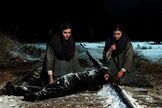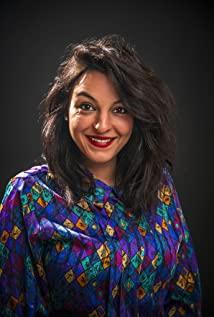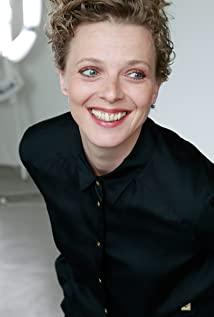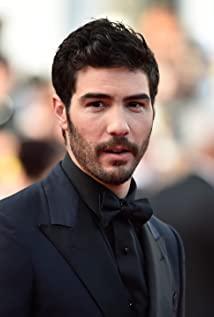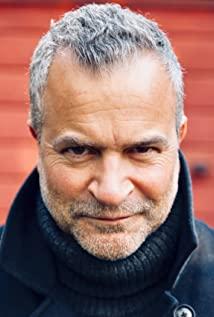(During the 2014 Venice Film Festival, I did a directorial dialogue for Tencent Entertainment. For some reason, I found that the Tencent News page was deleted)
The movie "Cut" puts the background of the story on the most taboo topic in modern Turkish history-the complete extinction of the Armenian ethnicity in the territory during World War I, which made the German Turkish famous director Feis Akin in the interview inevitable. Focusing on the topic of political reality and historical cognition, he also talked about his hard work in handling this grand subject and the concessions he had to make due to the current situation.
Interview with Fez Akin, let the Turkish compatriots confirm the history of the massacre
Text/seamouse
Subject: The Holocaust is still taboo, but it is beginning to loosen
Question: Because I have studied the historical background and real politics of Atom Igoyan’s "Alara Mountain" before, I know that successive Turkish governments and academic circles have always denied that it happened during the period of 1915–1917 when the Turkish Ottoman Empire was ruled. The Armenians insisted on the massacre that led to the deaths of 1.5 million people. They even included "recognition of the massacre" in Article 301 of the new criminal law to be convicted. But now, as a German-Turkish person, you still photographed this subject with great fanfare. Does this mean a certain degree of "taboo relaxation"?
Faith Akin: This history is indeed taboo in Turkey, and this is what attracted me to "adventure". However, today's civil atmosphere talking about the Armenian massacre is indeed relaxed. If you dared to talk about the murder of Armenian journalist Herant Dink in Istanbul 7 years ago, the next table would definitely interfere, "What the hell do you want to express?" But today there is no need to whisper. In Turkish, the Holocaust is called "Soykirim", and it can be used daily. The well-known domestic reporter Hasan Cemal wrote a book "1915: The Armenian Massacre", in which the word "Soykirim" was used for the massacre, and the author himself was the author of Cemal Pasha, a high-level Ottoman military officer who committed the massacre during World War I. Where's the grandson? The book is even displayed in the window of every bookstore in Turkish cities. Therefore, the taboos at the diplomatic level often do not affect the people.
Question: There have been but not many films about the Ottoman Empire's purge of Armenian ethnicity. How do you expect Turkish society to react to "Cut"?
Faith Akin: Both Atom Igyan’s "Alara Mountain" and Taviani Brothers' "Lark Villa" have done very well. I am a Turk who rarely gets involved in this subject, to be precise Is of Turkish origin. However, this movie will definitely be shown in Turkey. I hope that when the audience sits in the theater and sees Nazaret trying to erase the pierced cross on his hand in the 30th minute, it will arouse emotional ripples. At least I know and admit that in the country There was an Armenian ethnic group who believed in Christianity in history.
Q: Have you mentioned that finding Turkish actors for this film is difficult?
Faith Akin: No, there is a misunderstanding here. That refers to another abortion project. I once wanted to film the story of the murder of Armenian journalist Herant Dink in Istabul in 2007. After all, the historical contradiction between the two nations should be resolved by themselves instead of waiting. British, French, German or American. So I told myself that if you want to make this story, it must be a thorough Turkish movie, Turkish funding, Turkish production, Turkish reality and Turkish crew. I wrote the script and showed it to the ideal second actor, but he didn't dare to take it, thinking it would cause a lot of trouble for him. I found other actors and the answer was similar. I think the problem may stem from the fact that the time of the incident is too recent, only 7 years, it will make people worry about a lot of things, but what if the time stretches to a hundred years ago? And the story is not only about Turkey, but the whole world? So it's not difficult to find actors at all.
Question: As a German citizen, how do you expect "Cut" to react in Germany?
Faith Akin: It is very important that this is a mainstream audience movie that will let most audiences who have never heard of that period of history know it. The situation in Germany is a bit special. As an ally of the Ottoman Empire against the Allied Powers of Britain, France and Russia during World War I, it has more or less involvement in the history of the massacre of Armenians in Turkey. At that time, Germany knew about the Turks' cleanup plan, but did not try to stop it at all, and kept silent afterwards. Turkey still does not recognize this as a massacre, nor does it in Germany, but calls it "a tragedy."
Plot: Violence is everywhere, movies change the world
Question: There are two rape scenes in the movie. One was a crime committed by the Ottoman army against a fleeing Armenian woman, and the other was an American North Dakota railroad worker venting brutality (attempt) to a passing woman. In doing so, do you want to break away from regional history and emphasize ubiquitous violence on the scale of globalization?
Faith Akin: I tried to find the simplest and most direct tool in narrative strategy. This is a mainstream audience-oriented movie, so there is no too complicated metaphors and symbols. I really want to express the protagonist’s observation and even participation in the long journey. Of ubiquitous violence. I hope that the first audience of this film will be Turks, and the second audience will be Armenians. I hope that the film will form a bridge for communication between the two parties with historical grievances.
Question: The protagonist's mood change, and even the whole story's turn in the direction of finding relatives, began when Nazaret saw an open-air movie. You chose Chaplin for this. Why?
Faith Akin: First of all, to show the contemporary research work, I revisited almost all of Chaplin's works. Suddenly I realized that he is very similar to my actor Taha Raheem. I have always believed that movies and theaters can change the world and bring people from different conflicting cultures together. But I can't be as extreme as Quentin Tarantino did in "Inglourious Basterds", that guy directly killed Hitler in the theater. Then I will be more cautious and let the open-air cinema only change the fate of my protagonist.
Genre: Learn Westerns from Scorsese's Queen Screenwriter
Question: You have always emphasized the western film attribute of "Cut". Which western films have the greatest influence on you?
Faith Arkin: First of all, of course, Sergio Lionel and Clint Eastwood's pasta westerns, but those American westerns from the 1970s also inspired me. It was an interesting process of continuous learning and tribute. Leonne changed the earliest westerns to his own style of pasta westerns, and then Eastwood brought them back to the United States. On the other hand, I filmed westerns on the Mesopotamia Plain and the Antanian Plateau. They are not really westerns, but sooner or later I will make one. After all, I like westerns too much. . Stylization is actually very important to me. Filming always needs to be framed. Western films are the best way to combine personal feelings and genres. The love for westerns comes from the experience of watching movies with my dad when I was young. Even if "Cut" is not a tribute to Dad, it is more or less related to him. Of course, his three views have never been completely different from mine, the conflicting but forgiving contradiction between black and white, right and left.
Q: Talk about your work with American screenwriter Mardik Martin. What have you learned from him?
Faith Akin: My script is written in German, but when I decide to make a film with mainly English dialogue, I need to find such a person to help. He not only translated the script. Simple, but to convey and restore the daily life of the Armenian ethnic group that came to the United States 100 years ago. I think of Martin Scorsese’s "The Last Temptation of Christ", in which the Middle Easterners speak English with a New York accent. Martin recommended to me Mardik Martin, the screenwriter of many of his films. I used to I vaguely remember that he grew up in Iraq, but after Google a bit, he was stunned! Mardik is an Armenian, he must be my co-writer of this film. He has retired a long time ago, but he likes my story very much. I flew to Los Angeles to persuade him. The hotel is within walking distance of his apartment. Every morning, I have a hard time with him, and finally succeeded. His screenwriting method tends to be simple, and my story is too full. From him, I learned how to "break away" and how to discard the trash that I cherish.
Soundtrack: Old music in D minor
Question: In terms of the soundtrack, you continued to collaborate with Alexander Hacke (the main brain of the collapsed building EN of the industrial rock group), but unexpectedly did not see much folk songs or electrified world music?
Faith Akin: Hacke and I discussed this movie together very early. I will tell you about how to make it. I hope that the style of the movie will be more traditional and classic, and the music will be more old-fashioned. This may also surprise many viewers who are familiar with our partnership, and they did not wait for the expecting Neydi or the charged Neydi. Since I call it a Western, the soundtrack is more atmospheric and rustic. Hacke listened to me some works by the "Earth" band, and I was sure that it felt like this. He also found an Armenian lullaby. After all, the movie's history of massacre and wandering cannot be completely absent from Armenia. The lullaby is in D minor, and the tune that Hacke wrote for "Notch" is also fixed in D minor.
Feelings: I don’t plan to shoot Turkish stories next
Question: Religion brings the vendetta in the movie. What about your personal religious concept?
Faith Akin: You can’t blame religion, but blame those in power and military dictators who use religion to commit crimes. I also had my own religious journey. I grew up in a strict Muslim immigrant family. It took 18 or 9 years to adapt to these dogmas, and it took more years to abandon them. This is like the transformation process foreshadowed by my trilogy "Love, Death, and the Devil". It is also reflected in the different protagonists of the three movies. Like me personally, they did not say that they would no longer have faith, but In the tormenting life, curse.
Q: Most of your movies are still about blood in the motherland of Turkey?
Faith Akin: I plan to stop making movies related to Turkey in the next ten years, but I don’t guarantee that I won’t make them for the rest of my life. 10 years may be tough, 5 years, maybe the next third movie Will go back.
Location: Syrian civil war leads to move to Jordan
Q: The movie failed to be shot in Syria, where the protagonist was building roads and hiding?
Faith Akin: Yes, it is a pity! Six months before the outbreak of the Syrian Civil War, I did a lot of historical investigations there. Believe me, Syria at that time was the calmest country you could imagine and find. There were so many concerts, dramas, and intellectual discussions every night. It was a harmonious and peaceful scene, much safer than Turkey. In contrast, the Lebanese next door is very aggressive. The driver who drives is always cursing, and there is always a battlefield in his heart. The last thing we can imagine about Syria is war.
Tencent Entertainment: But in the end, it didn't make any scenes in Turkey, including the family's hometown, Mardin in southeastern Turkey?
Question: This has nothing to do with Turkey's domestic sensitivity to this subject. I used Turkish investment, clean money, and a large number of Turkish actors. But you have to know what a huge country Turkey is. The entire film industry and talents are concentrated in Istanbul to the west. To shoot in Mardin, the transportation cost will be very high. On the contrary, like "Lawrence of Arabia", we replaced it with Jordan, which has a similar landscape. That country is very small, and everything surrounds the capital Amman. The location is as far as 50 kilometers, so you can easily return to the capital to rest on the day. Moreover, the railway in the movie originally also leads to Jordan.
(After the Venice Film Festival that year, I wandered slowly from the Eastern Mediterranean to the eastern part of Turkey, and also went to the Mardin in the movie "Cut". Sure enough, there were also returning Armenian and Assyrian churches.)
View more about The Cut reviews






